|
In the factories, social clubs, and neighborhoods of Ybor City, several distinct ethnic groups evolved into a "Latin" community. Several factors aided this slow but eventual transition. To begin with, the ethnic groups making up the majority of Ybor residents, settled within a few blocks of each other, helping to facilitate cultural interaction. Additionally, the five mutual aid societies–Centro Asturiano, Centro Español, Círculo Cubano La Union Martí-Maceo, and L'Unione Italiana, born out of revolutionary struggles or the need for "mutual protection"–began to work together. The ethnic societies regularly supported each other in need, sharing meeting facilities, loaning supplies, or equipment for special events, and hosting open dances. It should be noted, however, that this interaction generally excluded the Afro-Cuban community of Union Martí-Maceo. By the turn of the 20th century, Ybor City was a growing, cosmopolitan immigrant community. With the cigar industry as its stabilizing economic force, each of the neighborhood's mutual aid societies provided a host of amenities with a vast array of cultural offerings, providing members a chance to socialize, debate politics, dance, and see international performers. Socials, dances, and concert recitals were a regular part of life in Ybor City between 1900 and 1950. Because a cross-section of Ybor residents attended dances, music was one key factor in unifying the various ethnicities of Ybor City into a "Latin" community. However, several distinctions must be drawn to understand the musical landscape of Ybor City in the 20th century. While music and concerts were ever present, musical styles and expressions varied depending on where and when the music was heard. For instance, the music played at a picnic differed from those heard in Centro Asturiano's theater. The music in the cantina of the Círculo Cubano was not the music heard in the dining room of the Columbia Restaurant, and youngsters looking to flirt and have a good time did not frequent the operatic performances at L'Unione Italiana. From concert recitals to zarzuelas, there was a lot going on musically in Ybor City. This article will merely highlight the variety and breadth of music heard in the Latin neighborhood from 1900 to 1950 and explain how music allowed each distinct ethnic group to celebrate its heritage while also becoming a part of a larger community that was both "Latin" and American. What is folk music? Folk music is the "unselfconscious" expression of a people. The traditions, customs, stories, songs, and foodways passed from generation to generation, told, re-told, changed, and told again, make up a people's folk culture–the part that is shared but rarely written down. "Once it is written down," says Spanish Lyric Theater founder and Ybor City native Rene Gonzalez, "it ceases to be folk. It becomes a choreographed performance." Popular Music Popular music differs from folk because popular music is made with the audience in mind. Where folk music might be heard on a front porch, a wedding, or a funeral, popular music is made to sell tickets or recordings. Folklorists have shown that once a folk tradition is performed and accepted by a broad commercial audience, it ceases to be folk and becomes popular. Tempos and rhythms might be altered, making them more palatable to a wider audience, usually outside the original culture. The folk-to-popular metamorphosis has often taken place in 20th-century American music. For example, the blues music of the South evolved into rock-n-roll; New Orleans funeral marches and ragtime became jazz and swing. The music of the Spanish, Cuban, and Italian communities of Ybor City went through the same metamorphosis. The music of the "Latin" community changed, blended, and was celebrated differently by each generation. Music and musical performance allowed each distinct ethnic group to celebrate both its unique heritage and, eventually, the traits each of those groups had in common. Folk Expressions in Ybor City Folk and popular musical styles have existed side by side for most of Ybor City's history. The Spanish, for example, danced the Jota and played the gaita (bagpipe) at picnics, but they also attended zarzuelas– light opera sung in Spanish. The Italian community, mainly from Sicily, had traditional brass and stringed bands, but the L'Unione Italiana also hosted an opera season with world-famous performers. Afro-Cuban members of La Union Martí-Maceo enjoyed the American popular music of Cab Calloway but also danced the Cuban "Son." Círculo Cubano, the club for white Cubans, hosted musicals and "Bufos Cubanos" but also danced the danzón at picnics and played Puntos Guajiros (Cuban folk songs) at social functions. Each ethnic group–Italian, Spanish, and Cuban–has its own folk music style: passed down over several generations. The roots or origins of these styles are varied and result from centuries of emigration, war, migration, or conquest. And, because music does not follow prescribed political boundaries or borders, folk music always contains elements derived from several ethnicities or groups. The folk music of northern Spain–Galicia and Asturias in particular–exhibits many Celtic styles one might more commonly associate with Ireland and Scotland. In Italian folk styles, specifically in Sicily, Moorish accents are found. Cuba's music is a fusion of Spanish, African, French, Mexican, and Caribbean nations. Indeed, before Cubans, Spaniards, and Italians arrived in Ybor City, the music they listened to had already crossed several oceans. Picnics were common social events for members of mutual aid societies. It was here that each group enjoyed traditional folk music. A photo from a Centro Asturiano picnic in 1912 features a young Gaitero with his bagpipes. A membership picnic in 1924 for the West Tampa club, Nuove Sicilia, shows a full Italian brass band, and a picnic for L'Unione Italiana of Ybor City, also in 1924, features a group with guitar, mandolin, and other stringed instruments. Spanish Folk Music of Galicia and Asturias The majority of Ybor City's Spanish community emigrated from the northern Spanish regions of Asturias and Galicia. By 1910, census records reported 2,337 Spaniards living in the area. Though most passed first through Cuba before settling in Ybor City, they maintained many Spanish folk customs and celebrated their regional identity through music and dance. The Gaita and the Gaitero The bagpipe, most commonly associated with Scotland, Ireland, and Celtic tradition in various incarnations, is widespread throughout Europe. France, Hungary, Romania, and Italy all have a form of "pipe with a bag." Over the centuries, several rather disparate cultures have influenced the music of Spain. At different periods, the Celts, Romans, and Moors each controlled some portion of Spain. Each conquest infused those regions with the customs of the dominant culture. The music most closely associated with Spain, flamenco, evolved from the Moorish influence, while bagpipes remained part of the northern folk tradition. In Ybor City, the Spanish members of Centro Asturiano and Centro Español brought the music of northern Spain to their picnics and social gatherings. The Spanish bagpipe is called a gaita, and the player a gaitero. The gaita differs from the Scottish pipe, having only one large drone pipe, while the Scottish pipe has three. Gaiteros were common fixtures at outdoor events. Photos and accounts from 1911, 1914, and the 1920s depict large picnic gatherings with gaiteros prominently highlighted. "One of the features of the day that drew special attention," reports the Tampa Daily Times in 1914, "was the presence of …one of the old-time pipers, who played several times during the day to large and interested audiences. [The piper] is a native of Asturias." Sicilian and Neopolitan Folk Music Very little has been written regarding Italian folk music in Ybor City. When the Works Progress Administration of the 1930s sent field workers to Florida to document the stories, songs, and life histories of "Latins," comparatively few Italians were interviewed. There are about 30 Spanish-language WPA recordings of songs and melodies, but there are none in Italian. As a result, the folk music traditions of Sicilians in Ybor City can only be pieced together or compared with other similar communities. The instruments commonly associated with Italy, particularly Sicily, are the mandolin and the guitar. Like the Spanish with their gaiteros, photos from Italian Club picnics depict large groups of people surrounding a band of musicians, all holding stringed instruments. Mandolin player and Tampa native John Pellegrino, interviewed in 1989, recalls, "I had an uncle, and once or twice a month, he had musicians come into his home. He would fix sausage and something else to eat, and people would dance." Pellegrino learned to play the mandolin in the 1930s on a homemade instrument built by his uncle, a furniture maker. In 1958, folklorist Alan Lomax stated, "The tradition of Italian folk music is arguably the least spoiled, most vigorous, and varied of Western Europe." In the spring of 1958, Lomax traveled throughout the Italian mainland, Sicily and Sardinia. Since over 90 percent of Italians immigrating to Ybor City were Sicilians from the agrarian Magazzolo Valley, what Lomax recorded on this trip, especially in Sicily, might approximate the folk styles in Ybor City. Period photos also show several Italian brass bands. As with Italian string-band music, little has been written about these brass ensembles save a few mentions of their participation in funeral processions and parades. Regarding funeral rites, University of South Florida historian Gary Mormino tells us, "…a brass band led the throng to the cemetery," while an 1893 Tampa Morning Tribune account reads in part: "Four large men carry the corpse…followed by a brass band, then an empty hearse and carriage precede…sorrowing relatives…" Former Hillsborough County Historian Tony Pizzo provides this short caption regarding brass bands: "Professor Ferdinando Mazzarelli was brought from Italy by the citizens of Ybor City to organize an Italian [brass] band. Besides organizing the band, he taught music…" Little is known about Italian brass bands and their appearances in Ybor City. Art Music: Opera, Musical Theater, & Classical Recital Picnics and festivals were the only time traditional, relatively unadulterated folk music was heard. The clubhouse theaters were reserved for formal musical expressions, termed by musicologists "Art Music." Musical theater, opera, and classical music recitals were all part of Ybor City's musical tradition, and each was heard, practiced, and played throughout the Latin neighborhood in the first half of the 20th century. While the sounds of brass or stringed bands were heard at Italian club picnics and casual get-togethers in the 1920s, the club hosted an annual opera season featuring internationally known performers of the day. Club member Joe Maniscalco recalled, "We used to get the operetti from New York. The locals also formed a theater to work with them." A Tampa Times article from 1922 mentions opera tenor Cavalleri Salvatore Sciaretti who the King of Italy had recently knighted. Sciaretti was playing a season of opera at the Italian Club, starring in Aida. Zarzuelas Another form of opera, though usually characterized as "light opera," was the Spanish zarzuela. Of all the styles of Spanish music heard in Ybor City, one of the most revered and remembered is the zarzuela. The zarzuela is considered the "traditional Spanish form of comic opera." Zarzuelas are generally two-act performances with dialogue that is both sung and spoken. "They are considered light opera because every word is not sung," says local theater director Rene Gonzalez. The zarzuela remained popular in Spain throughout the 19th century. The art form spread to Cuba, where eventually, Cuban zarzuelas were produced. In Ybor City, the comedic light opera of the zarzuela was top-rated and remained so into the 1960s. Classical Music Children taking music lessons learned a relatively standard Western European classical music repertoire and a few Spanish zarzuelas. Adela Gonzmart, a well-known resident and former owner of the Columbia Restaurant, was a classically trained concert pianist who attended Julliard in the 1940s. She performed recitals at the Centro Asturiano and other concert halls in Tampa. Her repertoire included the works of Schubert and Stravinsky but usually also included works from Cuban composer Ernesto Lecuona, perhaps Cuba's most famous classical composer. Adela's husband, Cesar, a classically trained violinist, studied at the Havana Conservatory and played "Society Music" at hotels and ballrooms throughout the United States and Cuba before finally returning to Ybor City. Cuban Music Cuban popular music is undoubtedly the most enduring of all "Latin" styles heard in Ybor City. Because of its proximity to Florida and because Ybor City residents frequently traveled to the island, Cuban music maintained a strong presence in Ybor City. "If it was popular in Cuba, it was popular here [in Ybor City]. You could walk down the street and hear Cuban radio," recalls Rene Gonzalez. The island of Cuba was a crossroads where the musical influences of white Cubans, Afro-Cubans, and Spaniards blended before eventually making their way to the neighborhoods and dance halls of Ybor City. The number of different styles that originated on the island directly resulted from the many cultures that called the island home. The Son, the Danzón, the Bolero, the Rumba, and the Cha-Cha, to say nothing of the music of the Afro-Cuban Santeria religion, merit more detail than we can go into here. It is safe to say, however, that many of these styles made their way from Cuba to the dance halls of Ybor City. African Slave Trade, Cuba, and Music Forced into slavery and made to work the sugar cane plantations, enslaved people in Cuba, like those in the American South, maintained as best they could their cultural identity, infusing Spanish musical styles with African rhythms, instruments, and melodies. The enslaved people forcefully imported to Cuba were from several African regions. Each of these African descendants brought music that, over time, influenced and changed European musical styles in Cuba. Although complex and unique in their way, the music of these groups shares many similarities. "The polyrhythmic and polyphonic language [of these groups], specifically African, is found in all Cuban folk music," explains one musicologist. The Danzón Like almost every Cuban form, the danzón is a combination of several musical styles and cultures. The danzón has the danza as its root, a Spanish dance form written in a 2/4 time signature. A review of Spanish language publications yields some insight into what people expected to hear when they went to a dance at one of the local social clubs. A 1912 issue of Tampa Illustrado advertises a "Baile Social" at the Círculo Cubano featuring Felipe Vazquez. The announcement reads in part, "We all know how everyone prefers the danzón." The danzón was a ballroom dance that "bears the mark of Europe." The Son Musicologists regard the Son as "…A mulatto, and quintessentially national genre of both African and Spanish origin." Combining the ten-line décima Spanish song form with African drumming and rhythms, the Son became Cuba's most popular musical expression by the 1920s and "the single most popular dance music genre of 20th century Cuba." The Son is defined this way in the book The Latin Tinge by John Storm Roberts: "The Son is the classic Afro-Cuban form, [with both] African and Hispanic elements." Almost all the numbers Americans called rumbas were, in fact, Sons. The Son was a marriage of black and white. Like American blues and rock and roll, the popularity of the Son, with its mix of black and white styles, was scandalous for some and exciting and sexy for others. So controversial was the Son that it became the subject of debate among the members of the Martí-Maceo Club. Minutes from 1928 highlight the controversy: Mr. Perez had attended a dance [at the club] and protested because the Son had been allowed. Mr. Perez said...all the Cuban societies collaborating to advance the black race did not allow this music. Mr. Gerbacio said the Son is regarded unfavorably in Havana. Mr. Punales said that in Havana, the white societies are dancing the Son…and he sees no reason to believe that because we are black, we will be degraded for dancing the Son…Mr. Rodriguez spoke in favor of the Son. Mr. R. Perez spoke against the Son. The president put the matter to a vote, and the results were four against and eight in favor [of banning the Son]. Cuban-Spanish-American–Music Until 4 A.M. In the dance halls of Ybor City, acceptance and identity were explored through music. Regarding the Martí-Maceo club, Anthropologist Susan Greenbaum writes, "Young and old, traditional and modern, belligerently Cuban and insistently American, were discovering common ground." By 1930, American popular music was fully entrenched in Ybor's social scene. There is this account from the Tampa Daily Times in March 1930: "The dance at the Cuban Club…was attended by 2,500 persons. American music was furnished in the main ballroom…and Cuban music in the second floor." La Alegra, the "Official Organ of the Centro Asturiano," features many announcements for dances and socials, including one for the Bob Sylvester Orchestra, who had headlined "all the major hotels and cabarets in New York" and played American big band and swing music. Other announcements indicate that tastes had shifted from the older style to the new. The Martí-Maceo also shifted to American music. As membership lagged, the Afro- Cuban club rented its meeting hall to African American touring musicians. "They had big bands, Cab Calloway, Nat King Cole, Louie Armstrong…when they were gonna play in Tampa for the Blacks, they would get the Cuban Hall," recalled one former member. The Martí-Maceo also hosted split-level entertainment or "Top and Bottom Dances." The club celebrated the grand opening of a new outdoor patio in 1942 with two American bands and one Cuban band. By at least 1940, top and bottom dances were the norm in Ybor City's social clubs. However, despite what appears to be a complete shift towards American jazz and swing, traditional music continued at picnics and other gatherings. A "Gran Picnic" in September of 1940 advertises, "Dance all day, Paso-Doble and Jazz!" And Centro Asturiano's 1940 New Year's dance featured "The Bob Porton Orchestra playing American dance music and the Siboney Orchestra playing Latin rhythms in the salon cantina." Two bands, one American and the other "Latin," became the norm for most of the second and third generations of Ybor residents. As the second and third generations came of age, the music featured in the social clubs of Ybor City was not tied as much to a specific ethnicity as it was to a typical "Latin" community. The program for the Loyal Knights of America's Spanish Fiesta, "Noche De Mantilla," featured "American Music," "popular Cuban songs," as well as music from Argentina, Italy, and Mexico, while the Don Francisco Orchestra played "Cuban-Spanish-American Music until 4:00 A.M." The music reflected the fluid crowds of Italians, Cubans, and Spaniards who were sure to be in attendance. CIGAR CITY MAGAZINE- JANUARY/FEBRUARY 2007 Art & Photography Contributors: Hillsborough County Public Library, Tampa Bay History Center, The Florida State Archives, The Tampa Tribune/Tampa Bay Times, University of South Florida Department of Special Collections, Ybor City Museum Society, private collections and/or writer. MANNY LETOManny Leto is the Executive Director for the Preserve the 'Burg in St. Petersburg, Florida. He also worked as Director of Community Outreach for the Ybor City Museum Society, then became the managing editor of Cigar City Magazine and Director of Marketing for 15 years with the Tampa Bay History Center. FOLLOW CIGAR CITY MAGAZINE
1 Comment
Rosemarie Santana Barrera, now Clark.
8/22/2023 17:06:45
Famous Conga Player, Buddy Chavez, and his cousin, trumpet player Danny Acosta, often played with their band at the Columbia Restaurant on ,7th Avenue. It would be wonderful to see Buddy Chavez, now deceased, featured in your online magazine. My mother, Barbara Santana, was born and raised in Ybor City, living at 1817 4th Ave. After she married my step father, Jose Barrera, also born in Ybor City, we lived in the adjoining duplex, 1819 4th Ave, where I was born. Ybor City was my world until we moved to Key West in 1957 when I was 11 years old. Priceless memories of a wonderful childhood. I have all the Cigar City Magazines published from the time it was established. I follow it now on Facebook and online.
Reply
Your comment will be posted after it is approved.
Leave a Reply. |
Archives
June 2013
Categories
All
|
Cigar City is a Florida trademark and cannot be used without the written permission of its owner. Please contact [email protected]
© 2021 Cigar City Magazine. ALL RIGHTS RESERVED.
© 2021 Cigar City Magazine. ALL RIGHTS RESERVED.

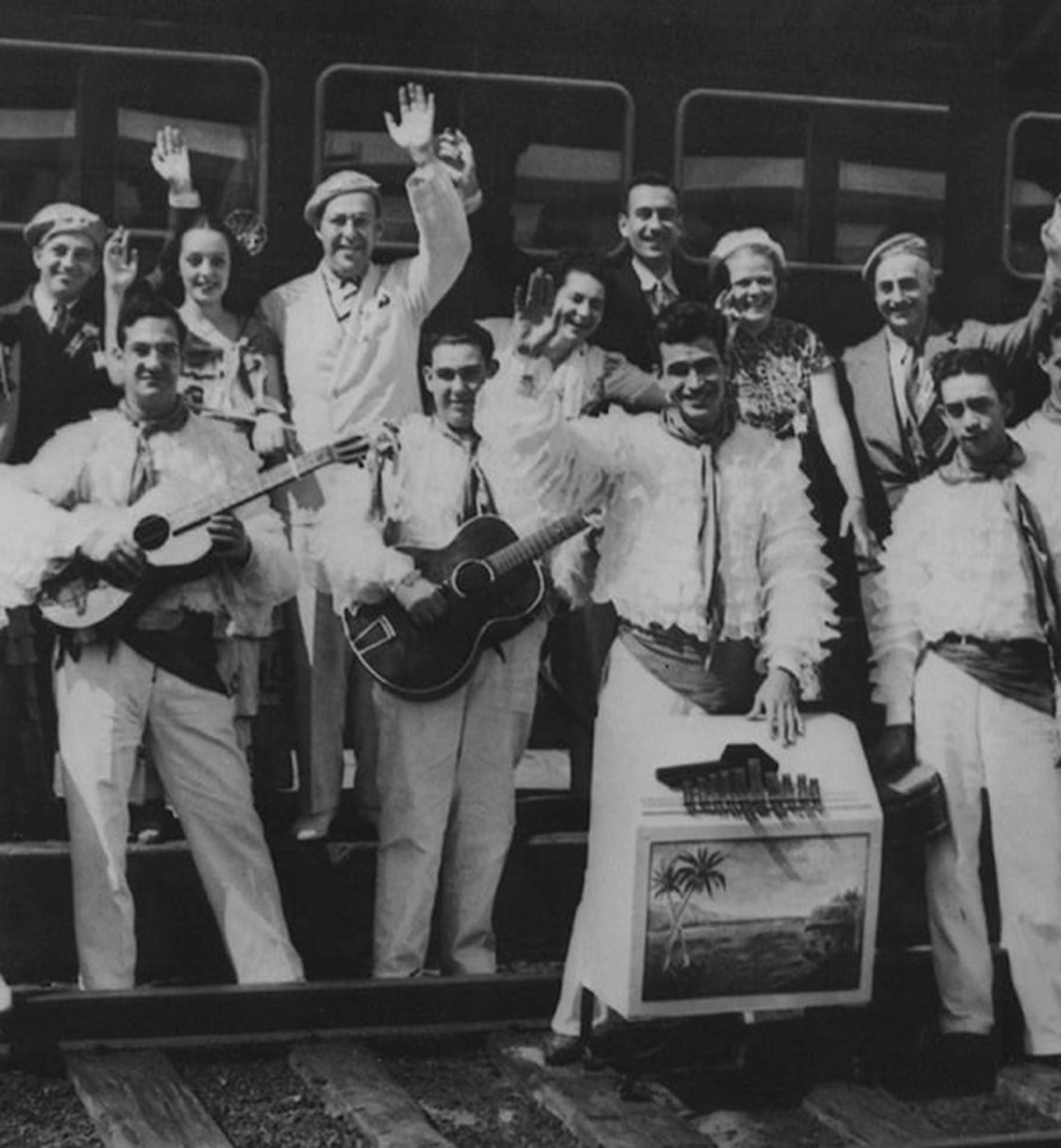
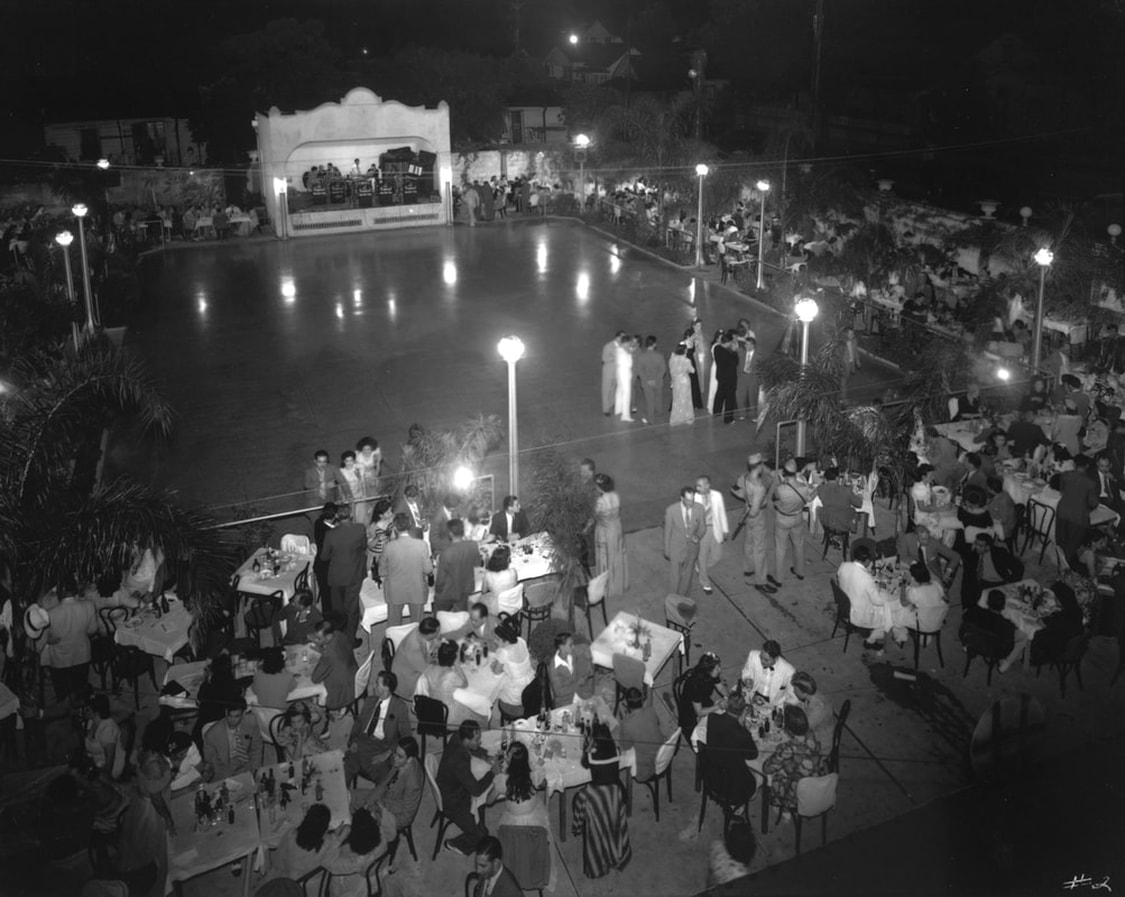
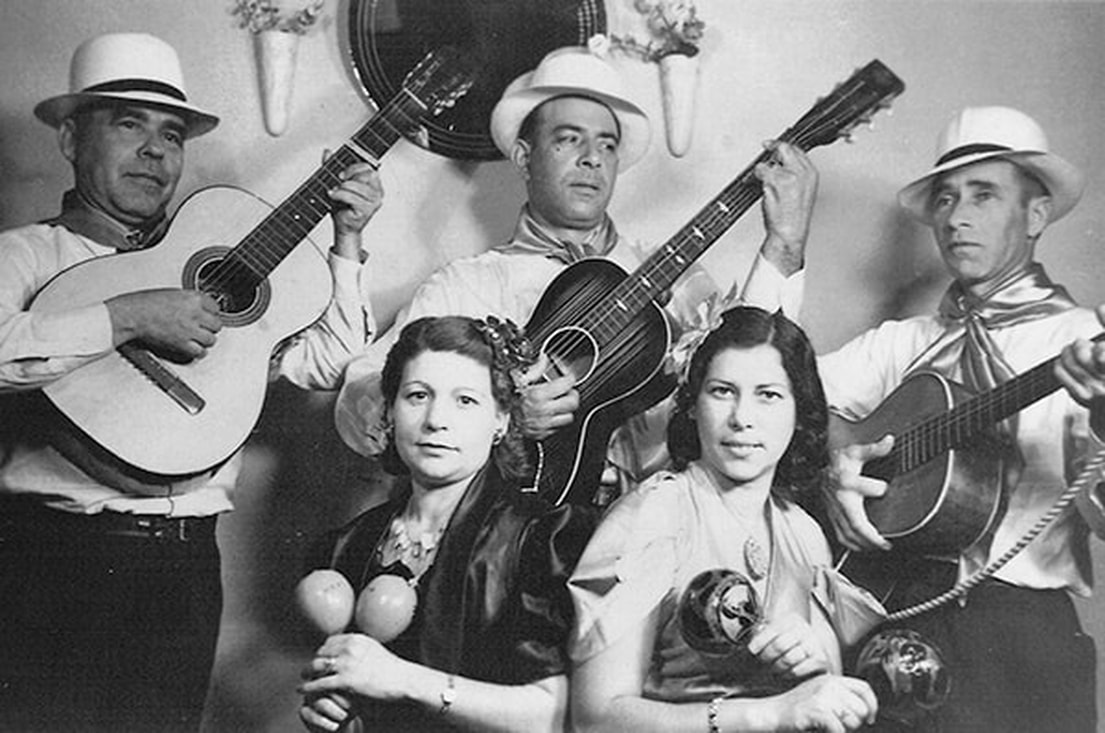
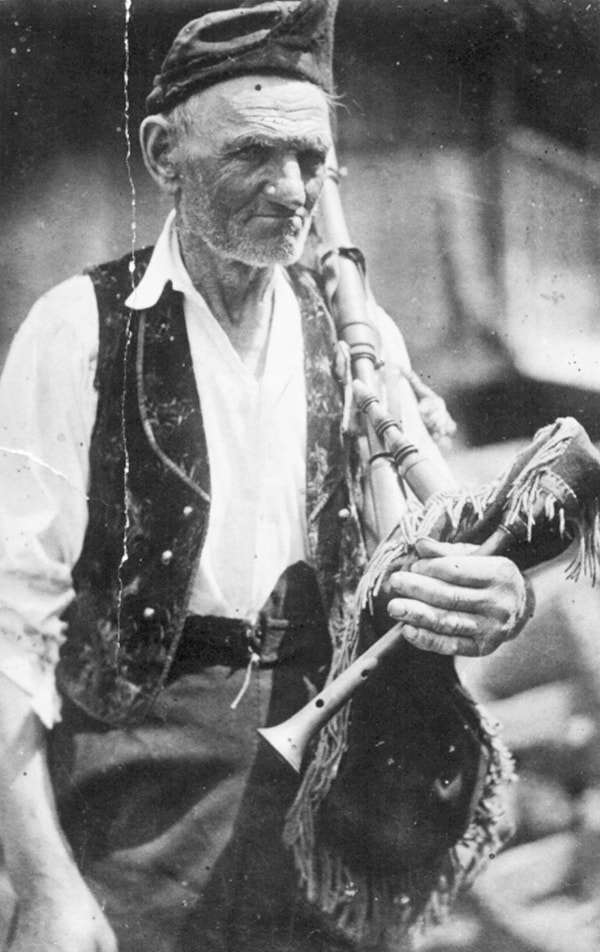
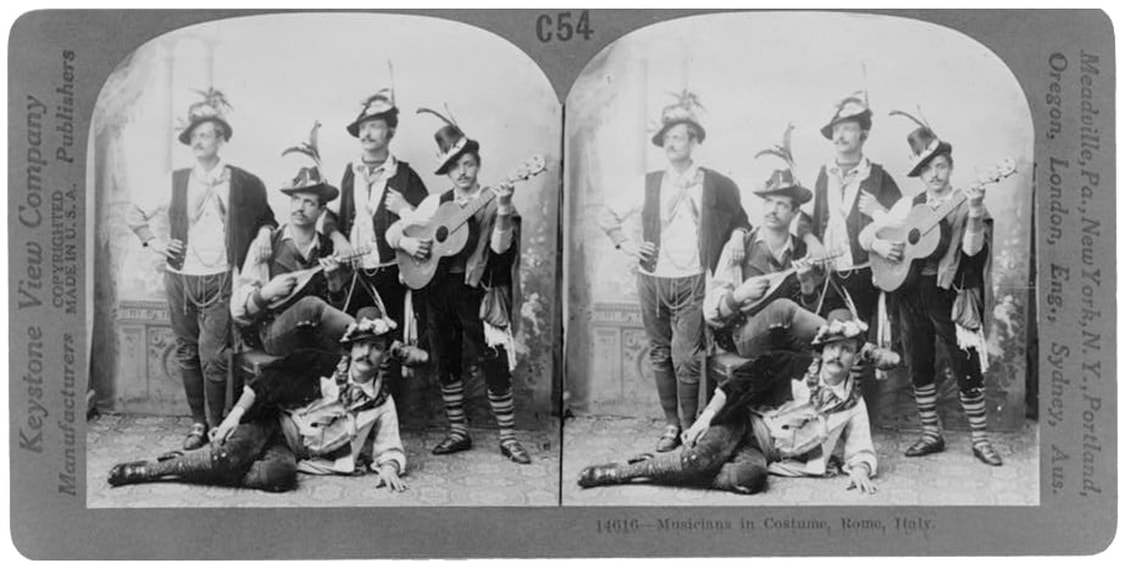
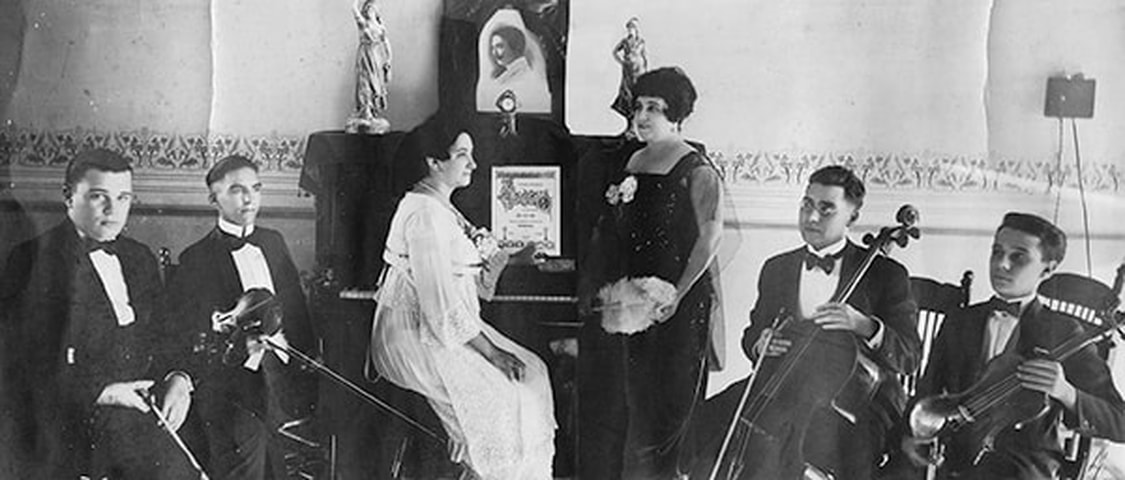
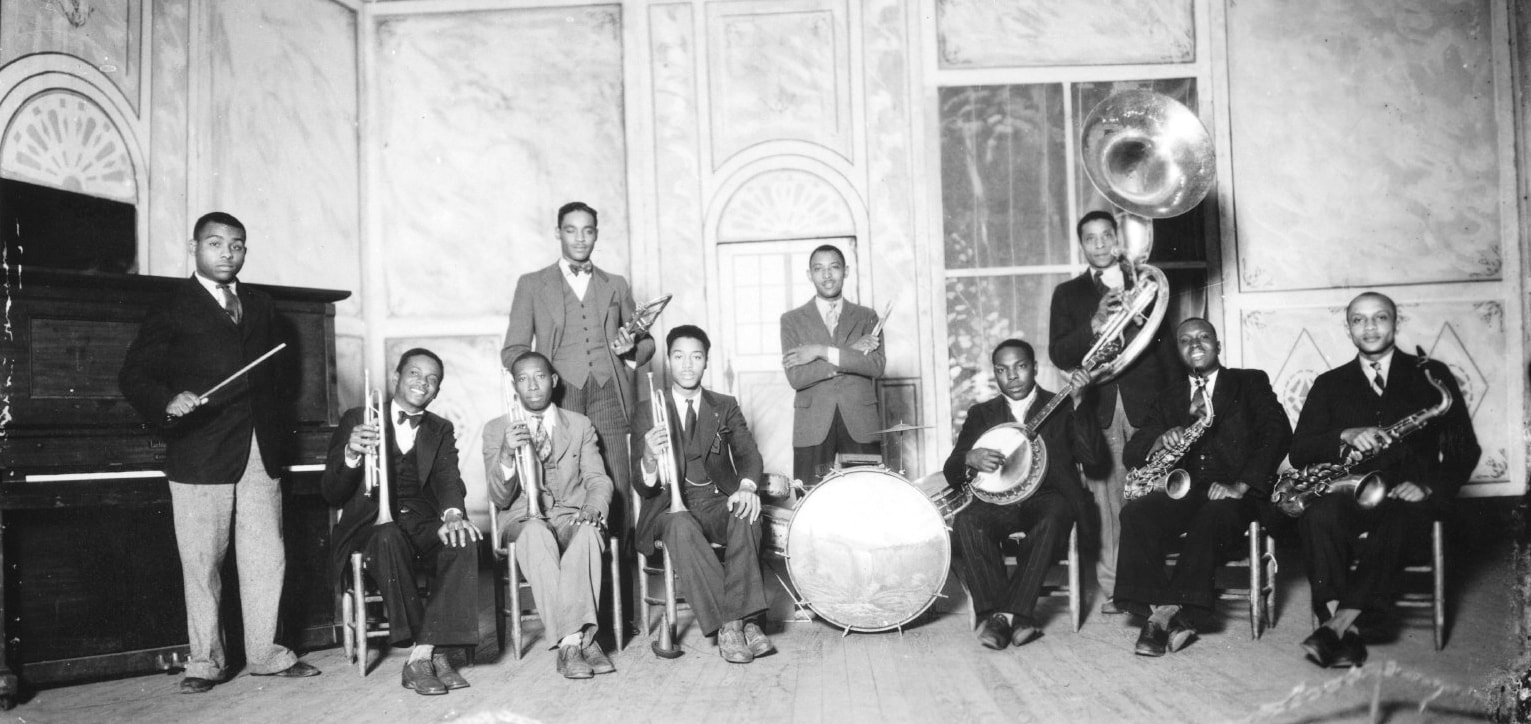
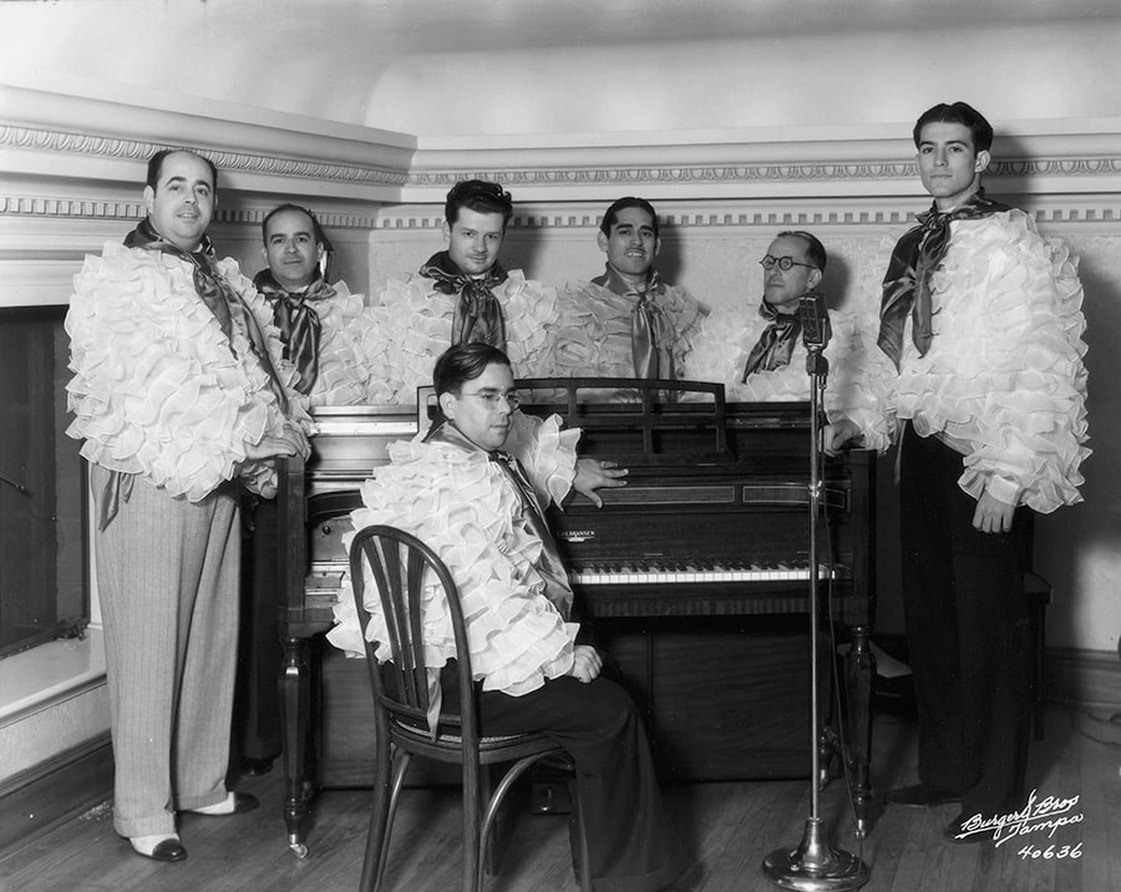

 RSS Feed
RSS Feed